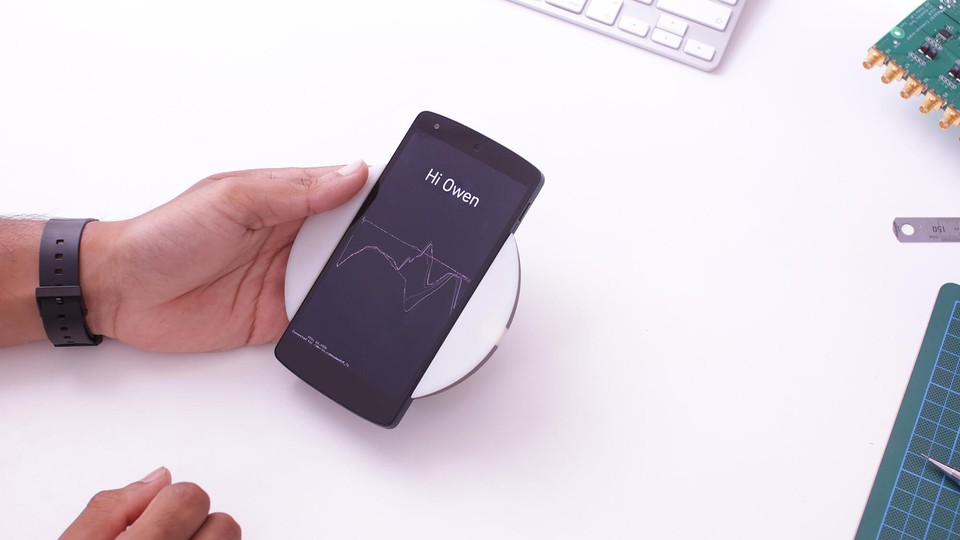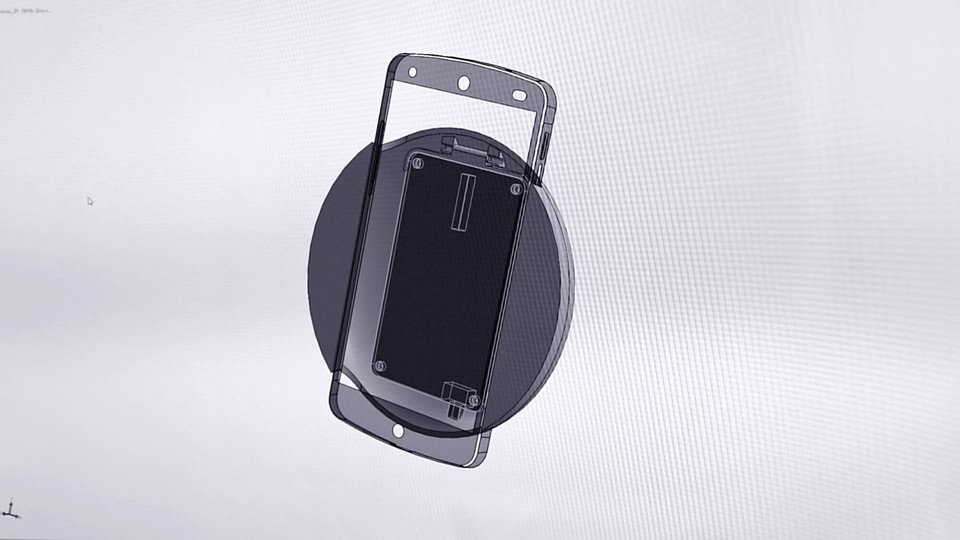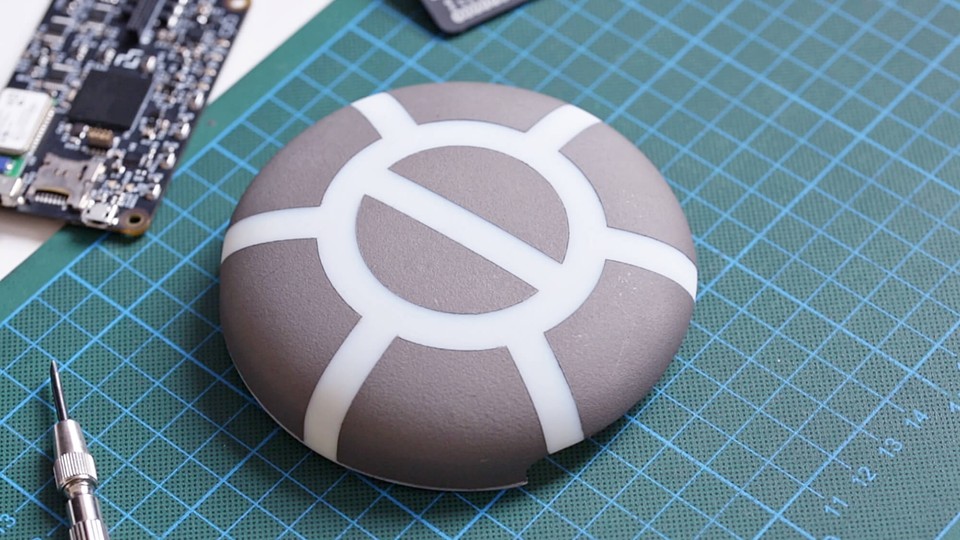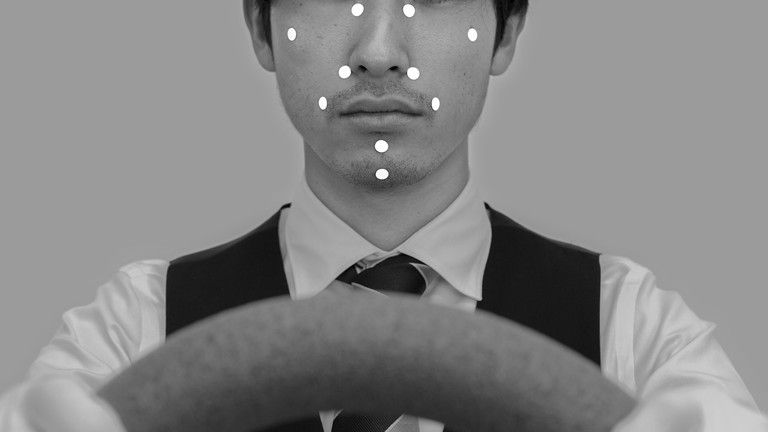Zensei
MIT Media Lab, 2015To make tangible the concept of casual and uninterrupted identification, we built a phone case that unlocks the phone by simply picking it up
Takram collaborated with MIT Media Lab Camera Culture Group to design and develop their embedded, multi-electrode bioimpedance sensing technology.
Zensei is an implicit sensing system that leverages biosensing, signal processing and machine learning to classify users by their body’s electrical properties. Zensei could allow many objects to recognise users; e.g. phones that unlock when held, cars that automatically adjust mirrors and seats, or power tools that restore user setting.
To demonstrate the concept of casual identification on everyday devices, we built a round smartphone case to house our sensor board. The case's round shape invites unique grasping styles while simultaneously adding surface area for the painted-on electrodes. The Zensei sensor board is mounted within the case and communicates with the attached smartphone via Bluetooth for continuous classification.



Credit
- Technology, Research: Munehiko Sato (MIT Media Lab), Rohan Puri (MIT Media Lab), Alex Owal (Google)
- Design Engineering: Yosuke Ushigome (Takram), Lukas Franciszkiewicz (Takram)
- Technical Program Lead: Deepak Chandra (Google ATAP), Ivan Poupyrev (Google ATAP)
- Associate Professor: Ramesh Raskar (MIT Media Lab, Camera Culture Group)

